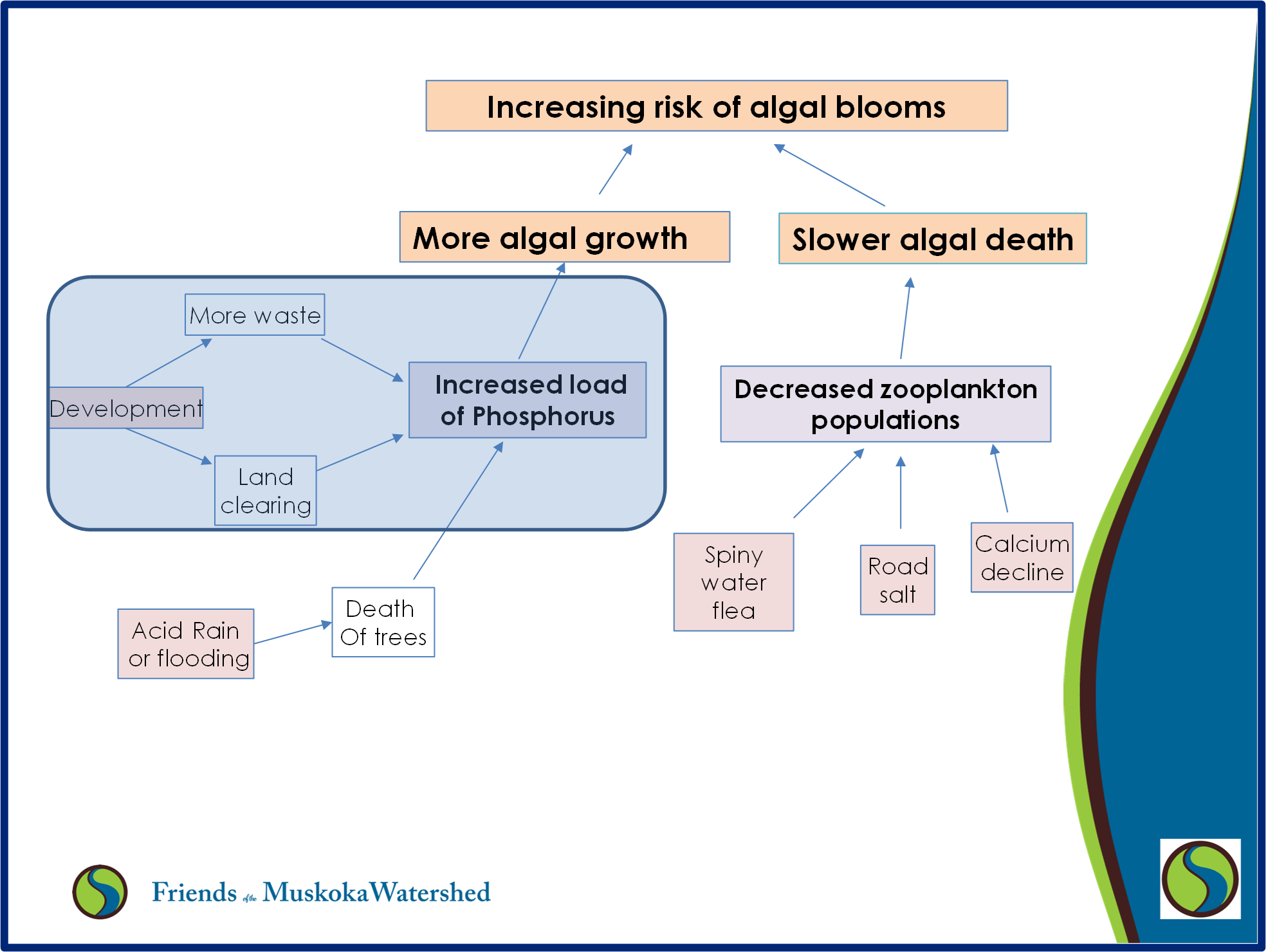You mean one problem isn’t enough?
How the cumulative effects of multiple stressors impact the Muskoka Watershed.
By Neil Hutchinson.

Over my fifty-year career as an aquatic scientist, I have witnessed and taken part in significant improvements in how we manage our human influences on the environment.
We have successfully managed phosphorus pollution in the Great Lakes, DDT, ozone depletion, acid rain, over harvesting, (some) invasive species, and the recovery of the Sudbury environment after decades of acid and metal contamination. These successes were achieved by focusing on each problem to the exclusion of others, as one specific concern.
Almost universally, success involved simply “turning off the tap” — addressing the source of the specific problem. These successes, however, have not taught us how to manage more complex problems. Those can occur because a relatively minor stressor is repeated many times or in many nearby places, or because several different stressors occur at the same time and place.
How do we preserve a Muskoka in which acid rain has left our forests weakened by calcium loss, making them more sensitive to the ice and wind storms being generated by a warming climate? We need only look at the impact that the April ice-storm had on our trees.
But our forests have also been reduced as our urban areas have spread, leaving them less able to absorb rainfall, and less able to buffer the increased flow of water in the river system caused by the more intense rain storms. As a result, we get more and faster runoff from storms and snow melt, with more erosion of soils into our rivers and lakes.
Our warming climate has also generated more favourable conditions for algal blooms, while road salt runoff into the calcium-starved waters threatens the health of the zooplankton community, impairing its ability to filter algae out of the water.
We now see a variety of stressors — each important by itself — but which now act together. Several of these are being made worse as the climate warms. Such new combinations and interactions of stressors produce “cumulative effects.”
Cumulative watershed effects refer to the combined impacts on a watershed resulting from the accumulation of many stressors, both natural and human-induced, over time and space. They may be understood in two ways. The first, as just described, is where multiple stressors, each different, combine to stress a watershed.
The second is where the same stressor comes from many sources to generate a significant stress. For example, the watershed may assimilate a pollutant added to water from one source, but if it comes from several sources it may overwhelm the ability of nature to assimilate it.
We see this with the pollutant phosphorus, which can be added to the same watershed from urban runoff, discharge of treated sewage and agricultural runoff. Similarly, a pollutant added once (say a storm-forced overflow from a sewage treatment plant to a river) may not have any significant effect.
If such events occur frequently, however, the river suffers. Such combined loading of phosphorus from a variety of sources may stimulate algal growth to the point where its decomposition uses up all of the oxygen in the water. When this occurs the sediments release even more phosphorus that is normally safely trapped when oxygen is present.
Understanding and managing cumulative watershed effects is crucial for ensuring the long-term health and sustainability of watersheds. We can no longer manage our watershed by focusing on one stressor at a time in one location.
We must tackle more complex problems in which particular stressors acting at one place have negligible effects on their own, but which result in significant adverse effects on our environment when acting at multiple places or times, or when acting along with other stressors.
The problem lies in identifying the stressors, understanding how they may work together, and then working to manage them. Meanwhile, continuing climate change adds a variety of stressors that we don’t yet understand making a difficult task even more challenging.

This is #22 in the weekly series of articles from Muskoka Watershed Council. This week’s contributor is Dr. Neil Hutchinson, a retired aquatic scientist, Bracebridge resident and Director: Muskoka Watershed Council, Friends of the Muskoka Watershed and Georgian Bay Forever. The series is edited by Peter Sale, Director, MWC.
This article was published on MuskokaRegion.com on May 17, 2025.
